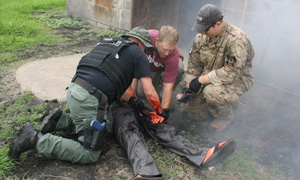I have always had great respect for combat medics. They not only support the mission but also watch over their teammates and must remain steady and focused during the worst of times. A good medic, typically referred to as “Doc,” is protected better than all of the gold in Ft. Knox. And guys like Jason Cunningham are proof of the greatest sacrifice a medic can make.
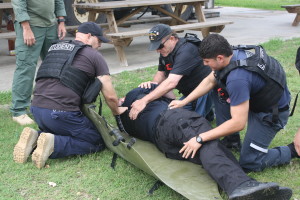 Recently, I was invited to take a TCCC course with the guys at Tactical Medics Group (www.tacmedgroup.com). So my photographer and I decided to make the 19 hour drive to check it out. The journey itself was enough to write about. However, we managed to make it to the course on time. The course was held at the Brazoria County Fire Fighting Field so there were plenty of places to run scenarios. Of course, it isn’t a medical course unless you have some death by PowerPoint. However, the classrooms had plenty space and the instructors kept the interest up. It was really the first time I didn’t feel like falling into a PowerPoint coma.
Recently, I was invited to take a TCCC course with the guys at Tactical Medics Group (www.tacmedgroup.com). So my photographer and I decided to make the 19 hour drive to check it out. The journey itself was enough to write about. However, we managed to make it to the course on time. The course was held at the Brazoria County Fire Fighting Field so there were plenty of places to run scenarios. Of course, it isn’t a medical course unless you have some death by PowerPoint. However, the classrooms had plenty space and the instructors kept the interest up. It was really the first time I didn’t feel like falling into a PowerPoint coma.
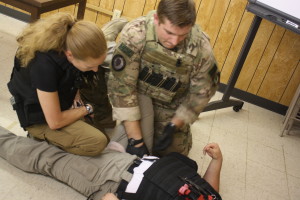 Nate, the lead instructor had a strong presence and had no problems keeping the class engaged while keeping his Marine Corps non politically correct qualities at bay. That itself made for a great time. Then entered Jared, the Army’s contribution to our TCCC course, as a former medic with the 75th Ranger Regiment, he also brought a wealth of combat experience to the course. Kenny was the backbone of the course. Without his mad computer skills all could have been lost. There wasn’t too much sarcasm in that last statement was there? Kenny, also from the Army Special Operations world, was a wealth of knowledge as well and a good sport I might add. Shawn with his background in SWAT and a decked out police issue Charger and finally Andrew great sense of humor and background as an Army Combat Medic rounded out the group. I was impressed by how well such an extremely diverse group of alphas personalities could work so well together.
Nate, the lead instructor had a strong presence and had no problems keeping the class engaged while keeping his Marine Corps non politically correct qualities at bay. That itself made for a great time. Then entered Jared, the Army’s contribution to our TCCC course, as a former medic with the 75th Ranger Regiment, he also brought a wealth of combat experience to the course. Kenny was the backbone of the course. Without his mad computer skills all could have been lost. There wasn’t too much sarcasm in that last statement was there? Kenny, also from the Army Special Operations world, was a wealth of knowledge as well and a good sport I might add. Shawn with his background in SWAT and a decked out police issue Charger and finally Andrew great sense of humor and background as an Army Combat Medic rounded out the group. I was impressed by how well such an extremely diverse group of alphas personalities could work so well together.
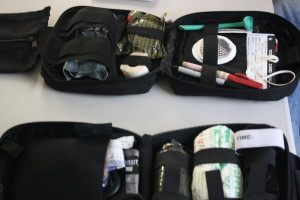 Not only does Tactical Medics Group teach courses but they also develop various IFAK kits available for purchase. They even have the Ambidextrous Tourniquet Attachment Kydex (ATAK), a great device for carrying a tourniquet on your gear. Every student was given one to use during the course. To be honest, I would have bet that it would have come out. But it never did. You can check them out here at www.AtakTQholder.com. I’m still not 100% convinced but I am impressed and appreciated the fact that they asked for honest feedback and ideas so that they can improve on it.
Not only does Tactical Medics Group teach courses but they also develop various IFAK kits available for purchase. They even have the Ambidextrous Tourniquet Attachment Kydex (ATAK), a great device for carrying a tourniquet on your gear. Every student was given one to use during the course. To be honest, I would have bet that it would have come out. But it never did. You can check them out here at www.AtakTQholder.com. I’m still not 100% convinced but I am impressed and appreciated the fact that they asked for honest feedback and ideas so that they can improve on it.
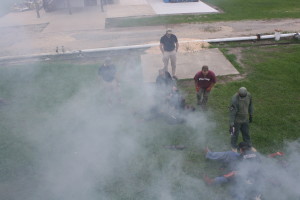 Tactical Medics Group was started in 2012 by Terry Moore, a veteran of the Australian military with backgrounds in tactical medicine and personal security details with a resume longer than this article. Although, he was overseas on a contract, we spent some time talking about the course. It was easy to tell that Terry has a strong focus on offering the best training possible to his students. And he takes it extremely personally if his instructors are not at the top of their game. To this end Terry will only hire good instructors with strong field experience, which is an extremely rare combination. We all know that there is always room for improvement and Terry doesn’t seem like one to ignore that fact. I was impressed that after seeing some of the pictures from the course he noticed areas that could use improvement.
Tactical Medics Group was started in 2012 by Terry Moore, a veteran of the Australian military with backgrounds in tactical medicine and personal security details with a resume longer than this article. Although, he was overseas on a contract, we spent some time talking about the course. It was easy to tell that Terry has a strong focus on offering the best training possible to his students. And he takes it extremely personally if his instructors are not at the top of their game. To this end Terry will only hire good instructors with strong field experience, which is an extremely rare combination. We all know that there is always room for improvement and Terry doesn’t seem like one to ignore that fact. I was impressed that after seeing some of the pictures from the course he noticed areas that could use improvement.
So what is TCCC anyway?
In just the last decade new guidelines for combat casualty care have dramatically increased the survival rate of those injured and debunked decades of what was thought to be sound medicine.
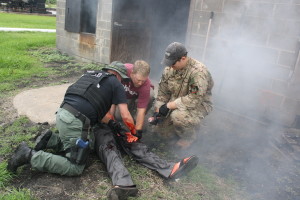 Until 2005 when USSOCOM changed their approach to combat medicine, the military had not made any major changes to their approach to combat casualty care since WWI. These changes came about from a paper complied in 1996 and put to the test by Pararescue units in 1997. Soon after some heavy hitters like the American College of Surgeons (ACS), the Council of Trauma (COT), and the National Association of Emergency Medicine (NAEMT) indorsed the new guidelines that we now know as Tactical Combat Casualty Care (TCCC).
Until 2005 when USSOCOM changed their approach to combat medicine, the military had not made any major changes to their approach to combat casualty care since WWI. These changes came about from a paper complied in 1996 and put to the test by Pararescue units in 1997. Soon after some heavy hitters like the American College of Surgeons (ACS), the Council of Trauma (COT), and the National Association of Emergency Medicine (NAEMT) indorsed the new guidelines that we now know as Tactical Combat Casualty Care (TCCC).
Today TCCC has gained a lot of support state side and has given way to Tactical Emergency Casualty Care (TECC) for law enforcement and the EMS practitioner. Both courses have proven to be invaluable in high threat environments.
What’s different about TCCC?
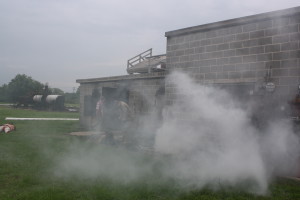 In order to support the mission TCCC is broken up into three phases. These phases focus on offering the best medicine possible at the right time in a hostile environment. Timing is everything. Trying to start an IV while in the open under direct fire is pointless and suicidal at best. The best medicine at the wrong time will increase injuries and risk the success of the mission. So let’s take a look at the phases:
In order to support the mission TCCC is broken up into three phases. These phases focus on offering the best medicine possible at the right time in a hostile environment. Timing is everything. Trying to start an IV while in the open under direct fire is pointless and suicidal at best. The best medicine at the wrong time will increase injuries and risk the success of the mission. So let’s take a look at the phases:
Care Under Fire – When a soldier is injured under fire, the focus and mission momentum must be maintained. This means that if possible the injured soldier must be able to provide some level of self-aid. So your kit needs to be where you can reach it from either hand. Self aid may include moving to better cover so that others can get to you to stop any major bleeding or being able to apply your own tourniquet. Massive bleeding is the main concern during the Care Under Fire phase.
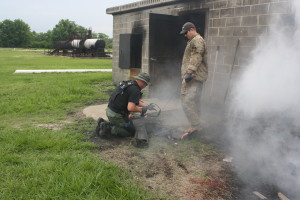 Tactical Field Care – Once the soldier is out of direct fire then basic life support (BLS) begins. Once major bleeding is controlled then basic airway management takes over along with continued patient assessment including any other basic interventions. If evacuation is delayed then Advance Life Support (ALS) may begin. Keep in mind that the concept here is just because you have it doesn’t mean you have to use it. If you can maintain an open airway manually using a jaw thrust maneuver then do you really need to intubate? If evacuation is delayed you may want to consider moving to intubation if needed, but if evacuation is nearby then you may be able to wait. Just remember you have to carry it to use it. So how much do you really need to carry?
Tactical Field Care – Once the soldier is out of direct fire then basic life support (BLS) begins. Once major bleeding is controlled then basic airway management takes over along with continued patient assessment including any other basic interventions. If evacuation is delayed then Advance Life Support (ALS) may begin. Keep in mind that the concept here is just because you have it doesn’t mean you have to use it. If you can maintain an open airway manually using a jaw thrust maneuver then do you really need to intubate? If evacuation is delayed you may want to consider moving to intubation if needed, but if evacuation is nearby then you may be able to wait. Just remember you have to carry it to use it. So how much do you really need to carry?
TACEVAC – This phase is more in line with EMS protocols for transporting to definitive care. ALS interventions can be preformed, drugs administered, chest tubes inserted, and wounds reassessed. All of the gadgets we get to play with on our bus. Of course in this case we are more likely to be in a bucket of bolts so ugly that the earth repels it. Others simply refer to it as a helicopter.
On the surface, is seems like common sense. However, under the stress of combat many mistakes have been made without this basic foundation. Now don’t get me wrong there is a lot more to it, and of course part of it was breaking the habits that I had already formed as an EMT. However, it seemed like the ALS students had a harder go of it since they are used to going straight to the ALS tool box.
What about using tourniquets?
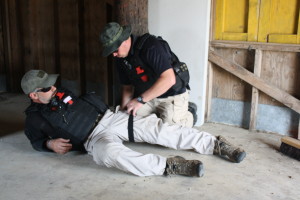 Another returning star to the stage of combat medicine is the tourniquet. Tourniquets have been shunned for decades due to various misconceptions. The emerging procedure is doing what is takes to control massive bleeding. If that means you drop a knee on the femoral artery of a soldier with a massive leg wound while applying a tourniquet or two side by side then using direct pressure and a pressure dressing to control the bleeding then so be it. Tourniquets have proven to not only save lives but the limbs as well. Studies of combat medicine have shown that no one has died or lost a limb from a properly placed and monitored tourniquet.
Another returning star to the stage of combat medicine is the tourniquet. Tourniquets have been shunned for decades due to various misconceptions. The emerging procedure is doing what is takes to control massive bleeding. If that means you drop a knee on the femoral artery of a soldier with a massive leg wound while applying a tourniquet or two side by side then using direct pressure and a pressure dressing to control the bleeding then so be it. Tourniquets have proven to not only save lives but the limbs as well. Studies of combat medicine have shown that no one has died or lost a limb from a properly placed and monitored tourniquet.
How does the TCCC training bring everything together?
Scenarios, lots of scenarios. We spent well over half of the day running scenarios filled with smoke, blood, sirens, and screaming actors; including a patient who looked like he was a linebacker for the Dallas Cowboys. Guess who ended up with him. Many of us realized very quickly that if we didn’t stay focused we fell right back into our bad habits.
As with most technology and emerging concepts over the course of history, the battle field has been the proving ground that has influenced much of what we do in civilian life. I have no doubt that more and more law enforcement agencies will continue to pick up this training through the TCCC’s counterpart TECC (Tactical Emergency Casualty Care). However, even more pressing is the importance of the first responder during active shootings, terrorist attacks, and high paced natural disasters to act in a similar manner so that more lives may be saved. This is where the TECC course shines. The TECC course takes all of the same concepts from the TCCC course but puts in a law enforcement/first responder environment.
Be sure to visit www.TacMedGroup.com for more information and while you’re at it sign up for a course already. Seriously stop reading this article and go…

